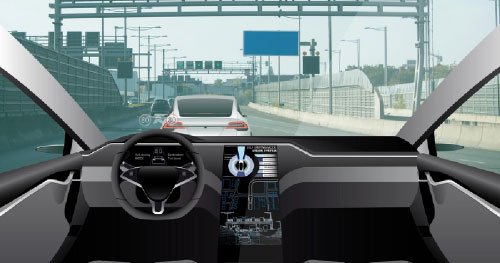The Future of Auto Safety – Technological Advancements and their Impact on Accident Rates
As we navigate through the 21st century, the automotive industry is undergoing a monumental transformation, driven largely by advancements in technology. The innovations in auto safety not only promise to reduce accident rates, but also aim to revolutionize the driving experience. Here, we explore some of the most groundbreaking technologies shaping the future of auto safety and their potential impact on reducing vehicular accidents.

Autonomous Driving Technology
Self-driving cars used to be the stuff of science fiction, but they are rapidly becoming a reality. Autonomous driving technology, led by companies like Tesla, Google and major automotive manufacturers, relies on sensors, cameras, and artificial intelligence to navigate roads without human input. The potential for reducing accidents is significant, as human error is eliminated from driving. According to studies, autonomous vehicles could reduce traffic accidents by up to 90%. As this technology continues to evolve and gain regulatory approval, we might see a future where roads are predominantly occupied by self-driving cars, leading to safer travel for everyone.
Advanced Driver-Assistance Systems (ADAS)
ADAS encompasses a variety of technologies designed to assist the driver and prevent accidents before they occur. Features such as automatic braking, lane-keeping assist and adaptive cruise control are already standard in many new vehicles. These systems not only enhance vehicle safety but also improve the overall driving experience. The integration of these technologies has been shown to decrease the rate of collisions significantly, as they compensate for human shortcomings by providing real-time assistance and reaction to road conditions.
Vehicle-to-Vehicle (V2V) Communication
Imagine a world where vehicles could communicate with each other. This is the promise of V2V communication, a system where cars share information about their speed, location, and direction. This technology can alert drivers or the vehicle itself about potential dangers, allowing for preemptive actions to avoid accidents. V2V communication is expected to drastically reduce accidents caused by sudden stops, blind spots, and other common road hazards.
Enhanced Material Use and Design
The materials used in car manufacturing play a crucial role in passenger safety during accidents. Recent advancements in material science have led to the development of stronger, lighter, and more durable materials for vehicle construction. These materials can absorb more impact during a collision, reducing the risk of injury for passengers. Moreover, the aesthetic and functional design of vehicles is also evolving to enhance safety. For instance, the use of augmented reality in windshields can display important navigation and vehicle performance data directly in the driver’s line of sight, reducing distraction.
Impact on Insurance and Liability
With the advent of these technologies, there will also be a significant shift in how vehicle insurance and liability are handled. As cars become safer and the role of driver error diminishes, we may see changes in the insurance landscape with premiums potentially decreasing for vehicles equipped with advanced safety features. Additionally, liability in accidents involving autonomous vehicles could shift more towards manufacturers and away from individual drivers.
Final Thoughts
The future of auto safety looks promising with the continuous advancements in technology. As we look ahead, the integration of autonomous driving, ADAS, V2V communications and improved materials are set to drastically reduce accident rates and redefine our relationship with vehicles. Embracing these changes will be key to achieving a safer automotive future. In the meantime, the risks associated with driving remain high. If you were involved in an accident or ever find yourself to be involved in an accident, please contact The Law Offices of Ron Sholes for legal advice tailored to your situation.